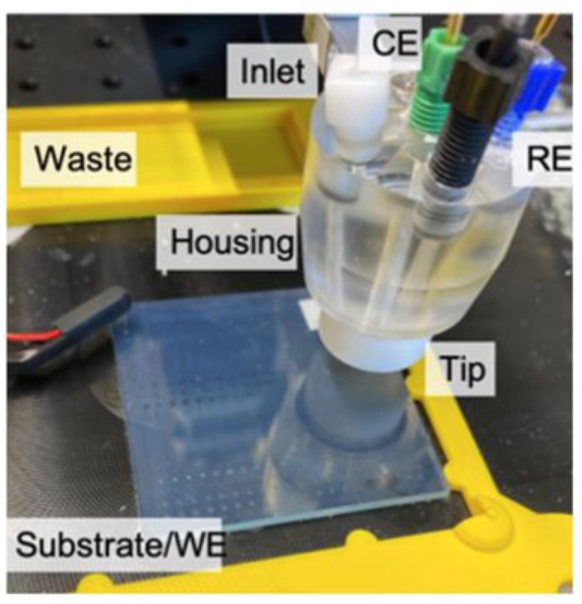The potential of scanning electrochemical probe microscopy and scanning droplet cells in battery research
 Image credit: Electrochemical Science Advances
Image credit: Electrochemical Science AdvancesAbstract
Spatially resolved characterization of electrode surfaces or electrode–electrolyte interfaces is of fundamental interest in battery research to unravel the complex underlying physicochemical processes. Scanning probe microscopy (SPM) techniques and derived methods have recently gained importance in in situ or operando studies of battery electrodes. This minireview provides an overview on well-established and advanced SPM methods such as scanning electrochemical cell microscopy (SECCM) and hybrid atomic force microscopy–scanning electrochemical microscopy (AFM-SECM) and their future potential for in situ/operando studies providing correlated structure/reactivity information. Although, most studies so far are focusing on lithium (Li)-ion batteries, the potential for post-Li battery chemistries is clearly evident. Future approaches for rapid performance assessment using scanning droplet cell electrochemistry in combination with advanced scanning probe microscopy are proposed and contrasted with the emerging challenges in the characterization of novel battery chemistries, as SPM methods have not yet been much used in this research area.